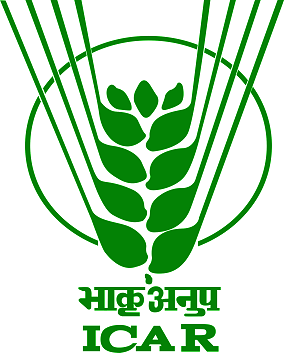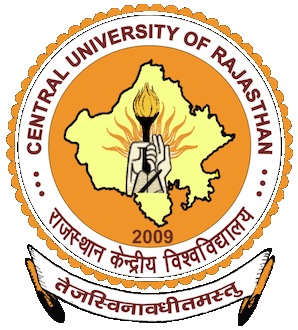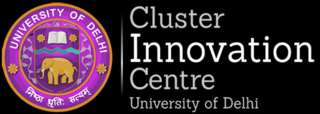Related Research Articles
The Common Admission Test (CAT) is a computer based test for admission in graduate management programs. The test consists of three sections: Verbal Ability and Reading Comprehension, Data Interpretation and Logical Reasoning and Quantitative Ability.The exam is taken online over a period of three hours, with one hour per section. In 2020, due to the COVID precautions, The Indian Institutes of Management Indore decided to conduct the CAT Exam in 2 hours with 40 minutes devoted to each section. The Indian Institutes of Management started this exam and use the test for selecting students for their business administration programs. The test is conducted every year by one of the Indian Institutes of Managements based on a policy of rotation.
Joint Entrance Examination – Main (JEE-Main), formerly All India Engineering Entrance Examination (AIEEE), is an Indian standardised computer-based test for admission to various technical undergraduate programs in engineering, architecture, and planning across colleges in India. The exam is conducted by the National Testing Agency for admission to B.Tech, B.Arch, etc. programs in premier technical institutes such as the National Institutes of Technology (NIT) and Indian Institutes of Information Technology (IIIT), which are based on the rank secured in the JEE-Main. It is usually conducted twice every year. Since mid of 2019, the JEE has been conducted fully online as a computerised test.

The Indian Council of Agricultural Research (ICAR) is an autonomous body responsible for co-ordinating agricultural education and research in India. It reports to the Department of Agricultural Research and Education, Ministry of Agriculture. The Union Minister of Agriculture serves as its president. It is the largest network of agricultural research and education institutes in the world.
The Joint Entrance Examination (JEE) is an engineering entrance assessment conducted for admission to various engineering colleges in India. It comprises two different examinations: the JEE-Main and the JEE-Advanced.
West Bengal Joint Entrance Examination (WBJEE) is a state-government controlled centralized test, conducted by the West Bengal Joint Entrance Examinations Board for admission into Undergraduate Courses in Engineering/Technology, Pharmacy and Architecture of different Universities, Government Colleges as well as Self Financing, Private Institutes in the State of West Bengal.

The All India Pre-Medical test/ Pre-Dental Entrance Test was an annual medical entrance examination in India. The exam was conducted by the Central Board of Secondary Education (CBSE) but is now replaced by NEET-UG by National Testing Agency.

The Common Law Admission Test (CLAT) is a centralized national-level entrance test for admissions to the 25 out of 27 National Law Universities (NLU) except NLU Delhi and NLU Meghalaya. CLAT was first introduced in 2008 as a centralized entrance examination for admission to the National Law Schools/Universities in India.

Central University of Rajasthan (CURAJ) is a central university located in Ajmer, Rajasthan, India. CURAJ has 12 schools, 32 academic departments and one community college covering technology, science, humanities, commerce, management, public policy and social science programs with a strong emphasis on scientific, technological and social education as well as research. Total student enrollment at the university exceeds 3000 and includes students from over 23 states.

The Common Entrance Examination for Design (CEED) is a joint entrance exam for post-graduate studies in the field of technological design. The exams are held annually at all Indian Institutes of Technology (IITs) and Indian Institute of Science (IISc). The examination is hosted by the Industrial Design Centre, Indian Institute of Technology Bombay on behalf of Ministry of Human Resource Development, Government of India.

Central University of South Bihar (CUSB) is one of the sixteen newly established Central Universities by the Government of India under the Central Universities Act, 2009. The university is located at Panchanpur, Gaya, Bihar, India. On 27 February 2014, Lok Sabha Speaker Meira Kumar laid the foundation stone for the permanent campus in Gaya. When completed, it will be spread in a 300-acre campus at Panchanpur. Currently further construction is ongoing. Dr. C. P. Thakur is now the newly appointed Chancellor by President of India and Kameshwar Nath Singh is the vice chancellor. CUSB is NAAC Accredited 'A++' grade university.
The National Eligibility-cum-Entrance Test (Undergraduate) or NEET (UG), formerly the All India Pre-Medical Test (AIPMT), is an all India pre-medical entrance test for students who wish to pursue undergraduate medical (MBBS), dental (BDS) and AYUSH (BAMS, BUMS, BHMS, etc.) courses in government and private institutions in India and also, for those intending to pursue primary medical qualification abroad.
Common Management Admission Test (CMAT) is an online computer-based test conducted by the National Testing Agency (NTA), India. It is a national-level admission test for facilitating institutions to select suitable students for admission in all management programmes approved by AICTE.
Two major engineering entrance examinations are used for admission to engineering institutes across India, Indian Institute of Technology Joint Entrance Examination (IIT-JEE) and All India Engineering Entrance Examination (AIEEE). In 2010, a proposal for a common engineering entrance examination was made by the Ministry of Human Resource Development. The proposal has gone through several names and formats, and is expected to enter use in 2024. Yet, the common entrance exam for all engineering courses in India has not become effective, even for academic year 2021–22.

The Cluster Innovation Centre is a Government of India funded centre established under the aegis of the University of Delhi. It has been founded in 2011 and introduced Innovation as a credit-based course for the first time in India.
National Testing Agency (NTA) is an autonomous agency under the Department of Higher Education of the Ministry of Education of India. It has been approved by the Union Council of Ministers and established in November 2017 to conduct entrance examinations admissions and recruitment. NTA is responsible for conducting numerous national level exams for admission and fellowship in higher educational institutions related to engineering, medical, management and pharmacy.

Bihar Combined Entrance Competitive Examination Board (BCECEB) conducts competitive examinations and counsellings every year for admissions in various courses of Medical, Engineering and Agricultural streams in the Institutions of Bihar. It is constituted under Bihar Acts, 1995. Office of the board is situated in IAS Association Building, Patna.
Gati Shakti Vishwavidyalaya (GSV), formerly National Rail and Transportation Institute, is a central university located in Vadodara, Gujarat, India. GSV is India's first transport University. It is presently at the campus of the National Academy of Indian Railways (NAIR).
The National Eligibility Entrance Test (Postgraduate) (or NEET (PG)) is a qualifying and ranking examination in India, for students who wish to study various postgraduate Doctor of Medicine (MD), Master of Surgery (MS), Diplomate of National Board (DNB), Doctorate of National Board (direct 6 years course in the field of Neurosurgery, Cardiothoracic Vascular Surgery, Plastic Surgery and Pediatric Surgery) and diploma courses, in government or private medical colleges in the country. This exam replaced All India Post Graduate Medical Entrance Examination (AIPGMEE). The exam is conducted by the National Board of Examinations (NBE). The counselling and seat allotment is conducted by Directorate General of Health Services (DGHS).

The standard entry-to-practice degree in modern evidence-based medicine in India is the Bachelor of Medicine and Bachelor of Surgery (MBBS). Alternative systems of Medicine in India are Ayurveda (BAMS), Unani (BUMS), Siddha(BSMS), Homeopathy (BHMS). M.B.B.S. a credential earned upon completion of a five-and-a-half-year undergraduate program. The curriculum is divided into one year of preclinical studies in general science subjects and three and a half years of paraclinical and clinical studies, followed by a one-year clinical internship. Before beginning the internship, students are required to pass several examinations, the final one of which is conducted in two parts. Postgraduate education in medical specialties typically takes 3 additional years of study after the MBBS and concludes with the award of a Master of Surgery or Doctor of Medicine(MD). Postgraduate diplomas in medical specialities may also be awarded upon the completion of two-year training programs. After that a person can further get a degree in superspeciality in his or her respective branch after successful completion of 3 years of superspeciality in a medical college.
References
- ↑ "What is the difference between CUCET and CUET 2022?". India Today. 24 March 2024. Retrieved 1 January 2024.
- ↑ केंद्रीय विश्वविद्यालय-संयुक्त प्रवेश परीक्षा (सीयू-सीईटी) 2021 [Central Universities -Common Entrance Test (CU-CET) 2021]. National Testing Agency. Government of India. Retrieved 10 February 2022.
- ↑ "DU to provide PhD admissions through CUET from upcoming academic year". hindustantimes.com. Hindustan Times. Retrieved 13 July 2023.
- ↑ "Now, the all-new CUCET". The Hindu . 5 May 2010.
- ↑ "What is the difference between CUCET and CUET 2022?". India Today. 24 March 2022. Retrieved 15 April 2022.
- ↑ "CUET". www.shiksha.com/science/cuet-exam. Retrieved 29 July 2022.
- ↑ "FAQ" (PDF). CUCET. Retrieved 13 March 2019.
- ↑ "CUET (CUCET) Exam Pattern 2022 (Revised): Marking Scheme, Subject, Marks, Duration". university.careers360.com. 23 February 2018. Retrieved 15 April 2022.
- ↑ "CUET Explained | Exam Format, Dates, Slot, Eligibility, Admit Cards, Evaluation – All You Need to Know". News18. 18 May 2023. Retrieved 31 March 2024.
- 1 2 3 "NTA CUET Syllabus 2022 PDF (Section-wise) Download Here". Proper Noun. Retrieved 15 April 2022.
- ↑ "CUET Syllabus".
- 1 2 "General Test - Syllabus CUET 2022" (PDF).
- ↑ "Language Papers 1, 2, Syllabus CUET 2022" (PDF).
- ↑ "CUET PG Test Paper Codes". aglasem.com. Retrieved 2 June 2022.
- ↑ "CUCET" (PDF). Archived (PDF) from the original on 11 July 2019.
- ↑ "AMU to adopt CUET for UG admissions, centre denies exemption request". TimesNow. 10 April 2022. Retrieved 10 April 2022.
- ↑ "Assam University".
- ↑ "Babasaheb Bhimrao Ambedkar University".
- ↑ "Banaras Hindu University".
- ↑ "Central Sanskrit University".
- ↑ "Central Tribal University of Andhra Pradesh".
- ↑ "Central University of Gujarat".
- ↑ "Central University of Himachal Pradesh".
- ↑ "Dr. Hari Singh Gour University".
- ↑ "The English and Foreign Languages University".
- ↑ "Guru Ghasidas Vishwavidyalaya".
- ↑ "Hemwati Nandan Bahuguna Garhwal University".
- ↑ "Indira Gandhi National Tribal University".
- ↑ "Avinashilingam Institute for Home Science and Higher Education for Women".
- ↑ "Gurukul Kangri".
- ↑ "National Rail and Transportation Institute".
- ↑ "Tata Institute of Social Sciences".
- ↑ "Gandhigram Rural Institute".
- ↑ "Sri_Dev_Suman_Uttarakhand_University".
- ↑ "Devi Ahilya Vishwavidyalaya".
- ↑ "Dr. A.P.J. Abdul Kalam Technical University".
- ↑ "Dr. B. R. Ambedkar School of Economics University".
- ↑ "Dr. B. R. Ambedkar University Delhi".
- ↑ "Madan Mohan Malaviya University of Technology".
- ↑ "BML Munjal University".
- ↑ "Galgotias University".
- ↑ "IIMT University".
- ↑ "Jagannath University".
- ↑ "Jagannath University, Jaipur".
- ↑ "Jaypee University".
- ↑ "Mewar University".
- ↑ "Teerthanker Mahaveer University".
- ↑ "Best University in Gurgaon | Private University in Gurugram: KRMU". www.krmangalam.edu.in. Retrieved 3 May 2023.
- ↑ Common University Entrance Test Guide (Graduate) National Testing Agency